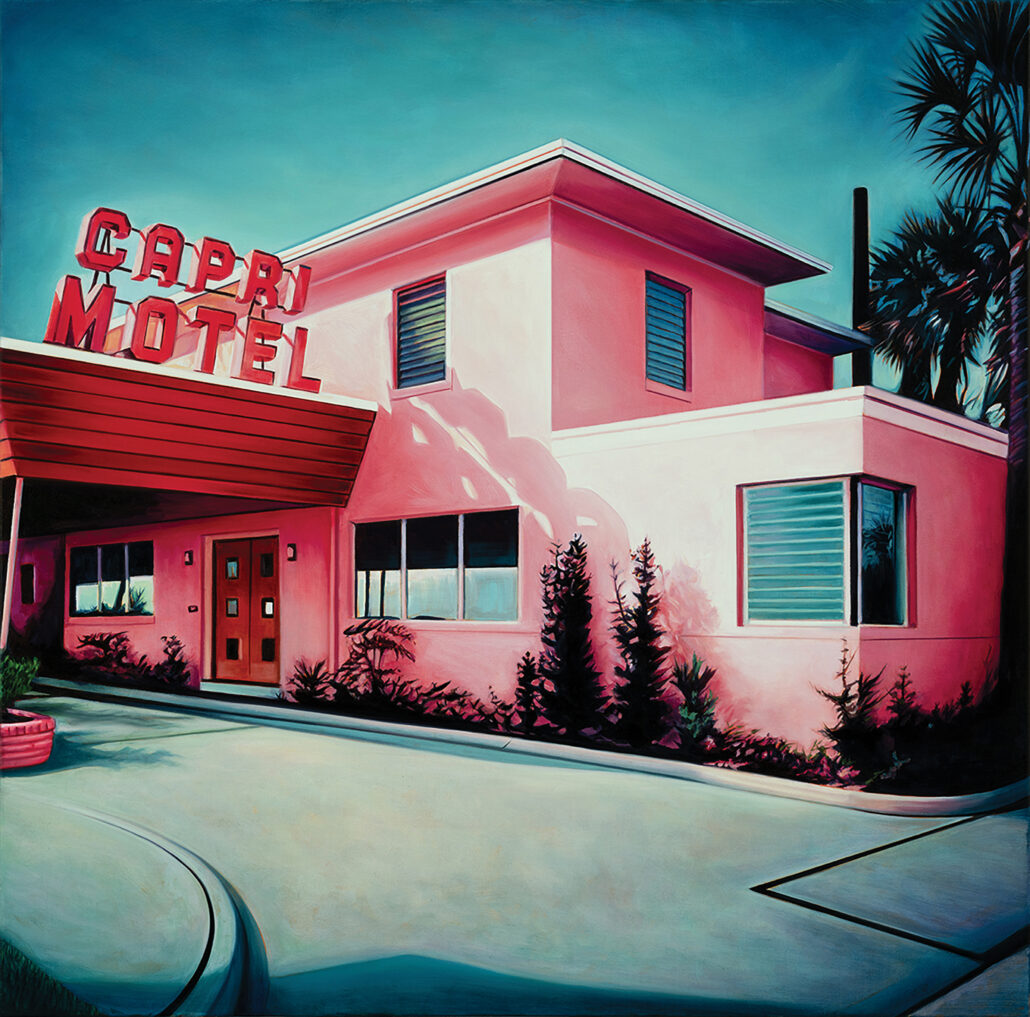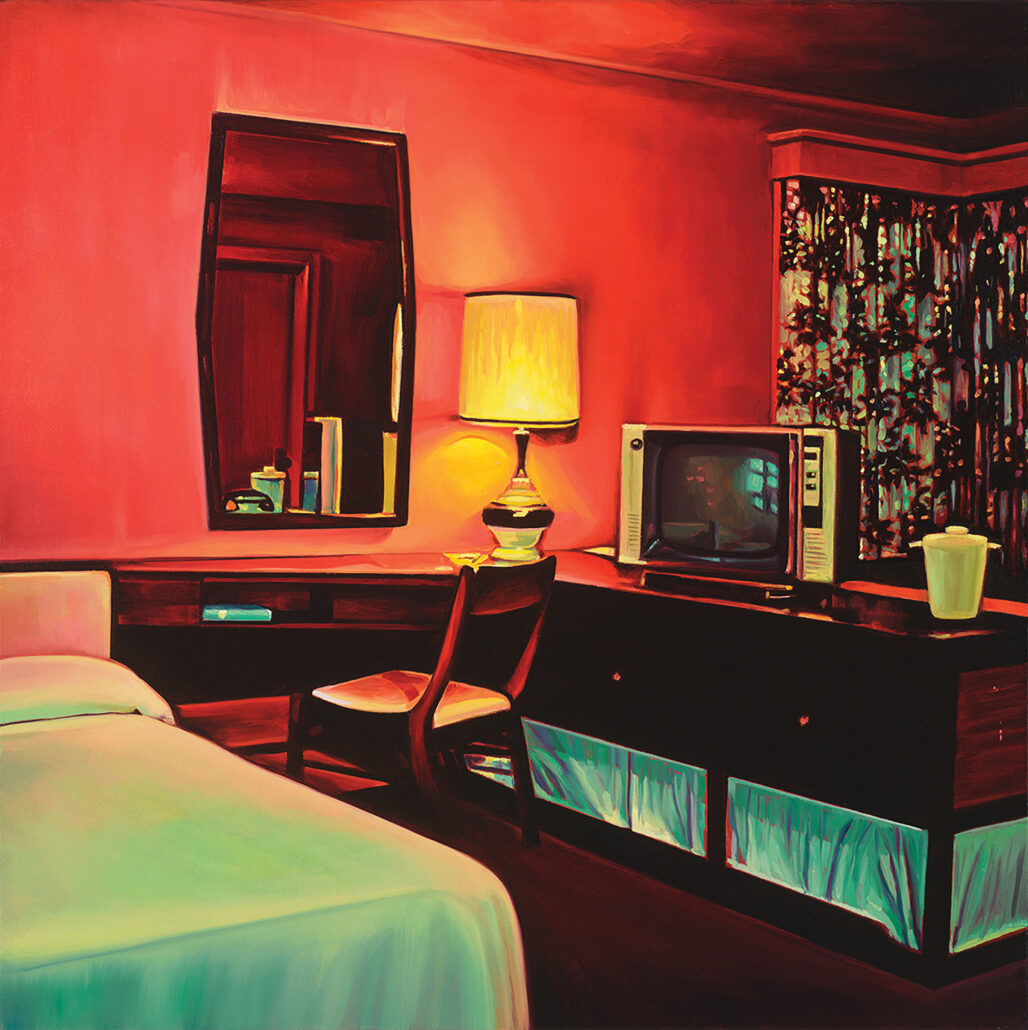There is a charming nostalgia within Steve Rosendale’s paintings, and we have all been there before: a beachside motel, its quaint faded shutters, floral curtains and its pastel walls. But then again, maybe I haven’t stepped foot into this place; maybe I’ve seen it in a film or on a postcard. Its familiarity tricks me. Rosendale describes his paintings as “images of a bygone era”. “Imagine the lens flare effect of 1960s faded film stock, a half-remembered image from a film you saw the night before.” The atmosphere and mood he conjures are palpable, evoking a range of emotions and immersing viewers in a rich sensory experience.
His main source of inspiration comes from looking at any film, postcard, television or ephemera from 1960s Americana, though his wider conceptual thinking is influenced by something much more specific. “Two paintings stand out for me that I saw at a very young age, which have stayed with me ever since: Edward Hopper’s Nighthawks, 1942, and Vincent Van Gogh’s Cafe Terrace at Night, 1888. These two images are very similar, almost as though Hopper’s painting is an updated version of Van Gogh’s. I have been trying to do my versions of these paintings ever since.”
Lighting plays a key role in Rosendale’s works – it’s almost as if there is rose-tinted glass between us and the canvas. White appears blue; the sun casts a hazy glow; unnatural light sources are iridescent; and shadows are always just so. It’s almost as if every scene has been perfectly depicted at the golden hour. And it’s these moments the artist seeks to capture. “I remember when I was young, if I experienced a heightened emotion or saw something that fascinated me, I would race home with a great desire to let people know what had just happened,” he says. “The most immediate way for me to do this was to quickly sketch it or draw it to get it down. Then I would shove it in someone’s face and say, ‘Look!’ So communicating something visually always seemed the most obvious way for me to express myself.”
Above: Artist Steve Rosendale.

Steve Rosendale, All Day Sunrise, 2023. Oil on canvas, 132 x 204cm.
Courtesy: the artist and G Contemporary.

Steve Rosendale, Capri Motel, 2023. Oil on canvas, 92 x 92cm. 023. Oil on canvas, 132 x 204cm. Courtesy: the artist and G Contemporary.

Steve Rosendale, The Guava Room, 2023. Oil on canvas, 62 x 62cm. Courtesy: the artist and G Contemporary.

